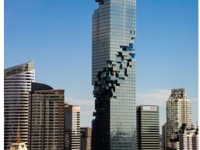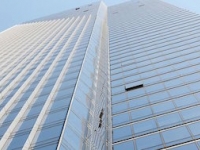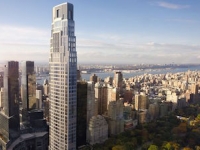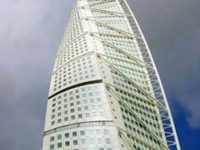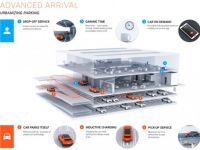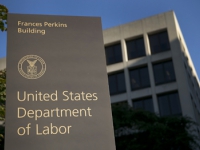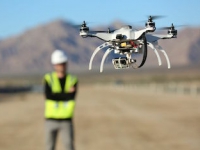The MahaNakhon Tower in Bangkok, Thailand looks incomplete, but the eye-catching pixelated look of the 77-story mixed-use building is designed to represent the changing and growing nature of the city below.
The Leaning Tower of Pisa was not designed to lean. Neither was the Millennium Tower in San Francisco, but according to several sources, it is not only leaning 2 inches, but has sunk 16” since its completion in 2009. Two inches doesn’t seem like much, but when you live in one of the top award winning residential towers in the world, two inches might as well be two feet. No, I take that back. Two inches of lean in one of the highest earthquake zones in the world is a disaster waiting to happen. In this case, the tower at 301 Mission Street, leaning 2 inches and sinking double the amount that it was projected to in the next 50 years is no small matter and if nothing else is a legal disaster in the making.The owners of the condominiums in this award winner have hired four legal firms to represent them in court. How can they afford to do that? Good question. It seems that folks like Joe Montana and Hunter Pence have bought units there and as you might imagine, there are some confidential owners who have bought units for investment purposes in this the 4th tallest tower in San Francisco.The combined filings to this point amount to $500 million for a building that 6 years ago was said to have cost $350 million.
September 02, 2016
We recently wrote about the 144 projects that are changing the London skyline, but let’s not forget that the largest city in America, New York, is also undergoing a construction boom both above and below ground.Of course we have heard about the Hudson Yards and World Trade Center rebuild, but a recent article in amny.com and noted by the AGC Smart Brief, lists 12 “supertalls” that are changing the NYC skyline as we know it. Whether on the fringes of Central Park or around the World Trade Center, the towers, both commercial and residential, will offer vistas and sky views to those who have the means to either “buy in” or lease in the city.
August 30, 2016
Why would anyone want to build a twisted design in the first place? Developments in design and technology can reduce wind loads on the buildings and take advantage of solar angles.
August 25, 2016
The debate over whether we will have driverless cars rages on to little or no avail, but likely for naught. Driverless or autonomous cars will be the norm for the future and many semi-driverless cars are on the roads today. Tesla today has a system called “Summon” that allows for some of its cars to drop off its passengers at the front of the building and then go park itself, either in a nearby garage or maybe return home to your own garage and wait until you “summon” it again to pick you up at the office.Why would we be writing about that subject today on a construction website? One, because it is fascinating that the technology is moving so fast and two, because of the impact that autonomous cars and trucks will have on the future of construction of new roadways and parking spaces necessary for office buildings of the future.
August 03, 2016
In the construction industry, productivity and profit are always doing a dance. They are always partners no matter whether your firm is a global giant or a local sub. Whether productivity and profit perform well enough to make it onto the professional stage or just at the local club depends on both productivity and profit doing a well-choreographed performance. If the productivity on the jobsite is good, then your profit is likely better. If your work crews are not performing and productive, then your profits are likely not performing well either.McKinsey & Company recently did a study authored by members of their team titled “Beating the low-productivity trap: How to transform construction operations” that focuses on 30 major UK infrastructure engineering and construction firms over the decade from 2005-2015 to measure their growth and to determine whether they either performed or underperformed in their markets.Even though this study was about infrastructure engineering and construction firms centered in the UK, the points made and the tips offered can apply to every company doing the productivity-profit dance, no matter what your size, should “read and heed.”
July 28, 2016
“Anyone in the construction industry in this low bid and worker shortage environment had better take a really close look at the rules in this interpretation, especially if you are using third parties for staffing on your projects.” – Kollaer
July 11, 2016
Happy 4th of July to all of our readers!
July 04, 2016
What many call “ghost towns” in China, one photographer calls “unborn” cities. Chicago-based photographer Kai Caemmerer traveled to China to photograph a series of new town projects that are part of a Chinese national plan to house 250 million residents.
July 01, 2016
Some sources believe that there were one million drones sold last year. According to those sources, up to 40% of those drones are being used in the construction and infrastructure industries.According to a recent post on Construction Dive, the long awaited FAA drone rules for the commercial use of drones weighing up to 55 pounds aimed at bringing some order to the “pre Jetson” skies have been released.The construction and infrastructure industries are the largest commercial users of these drones. The commercial use of drones for surveying, remote sensing, progress photos, pipeline inspection, site and emergency inspections in hazardous areas has already proven that drones can provide a much needed tool and that they will be around for years to come.
June 29, 2016

